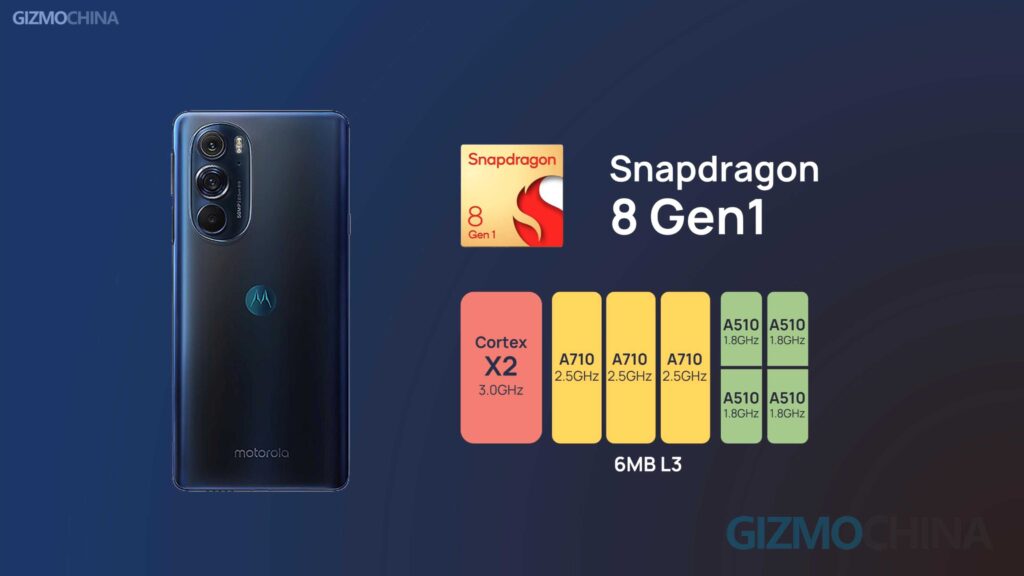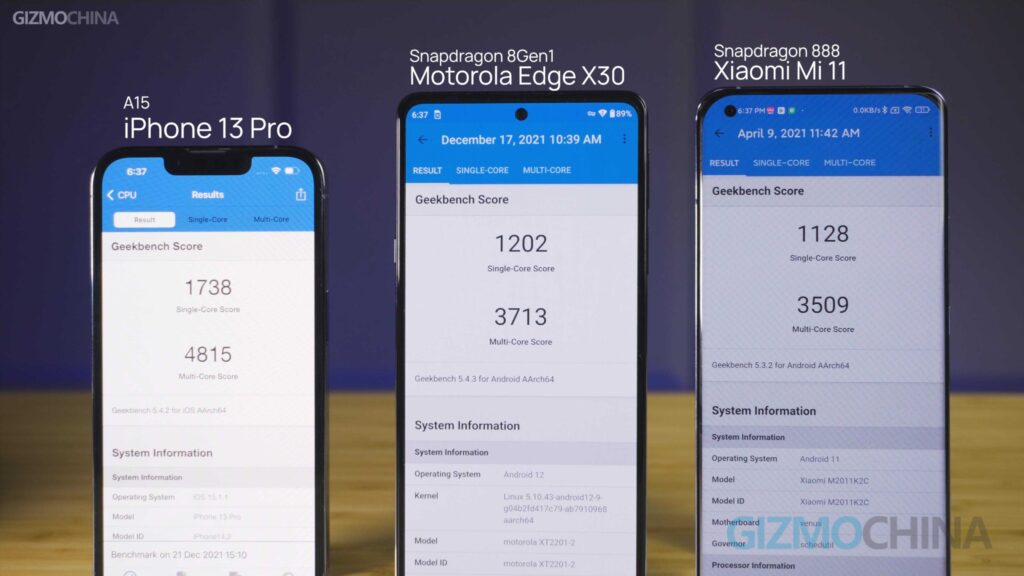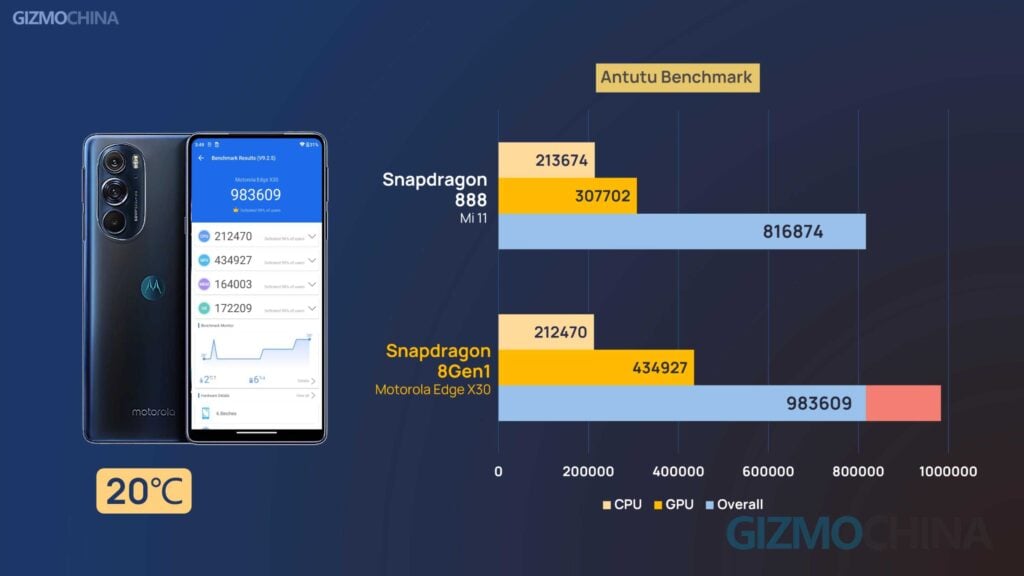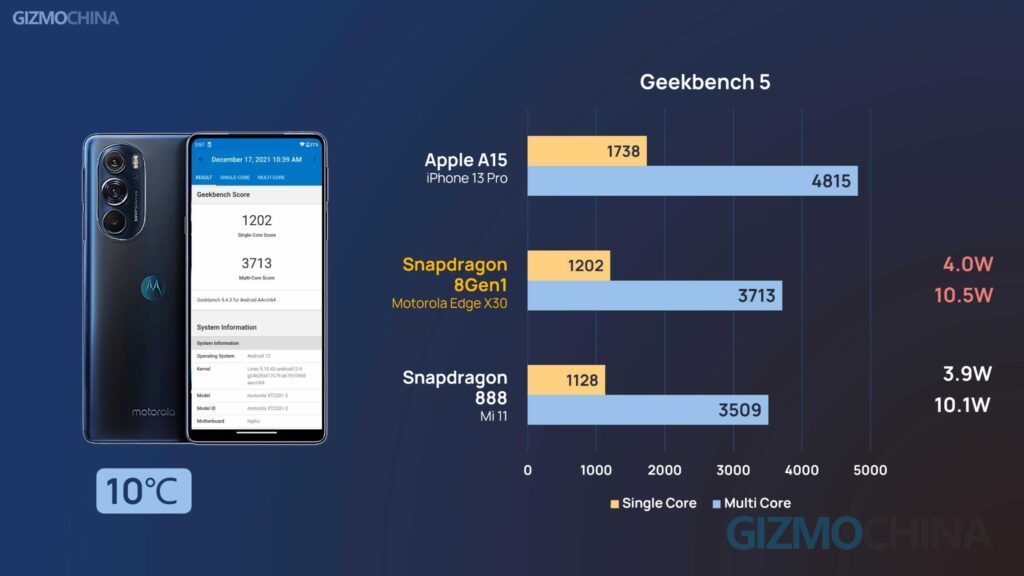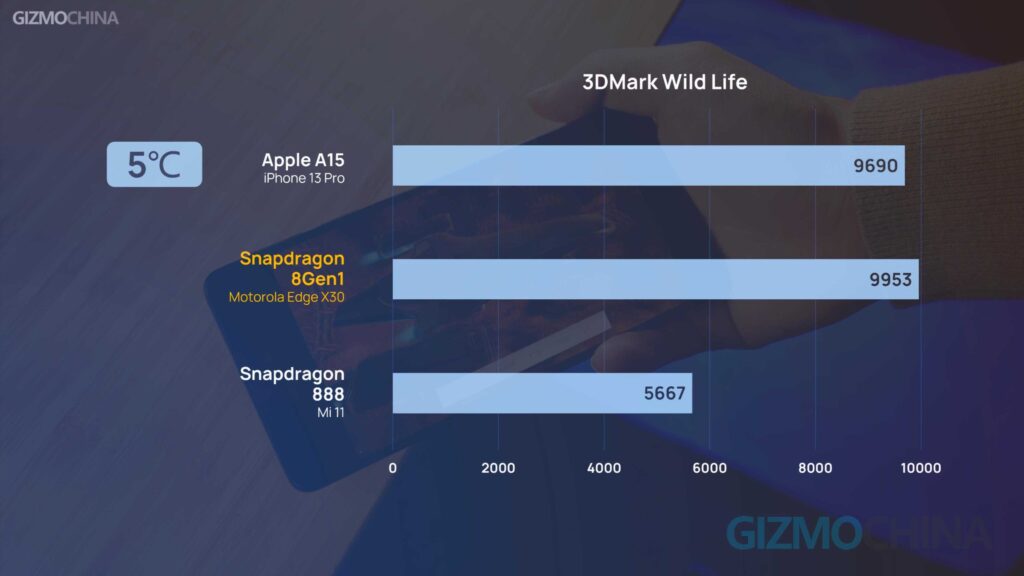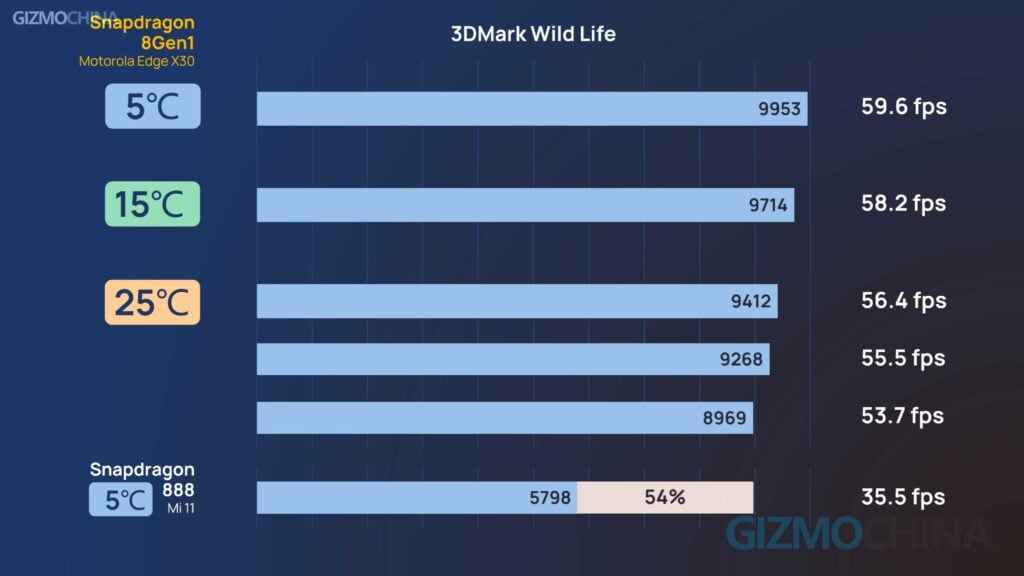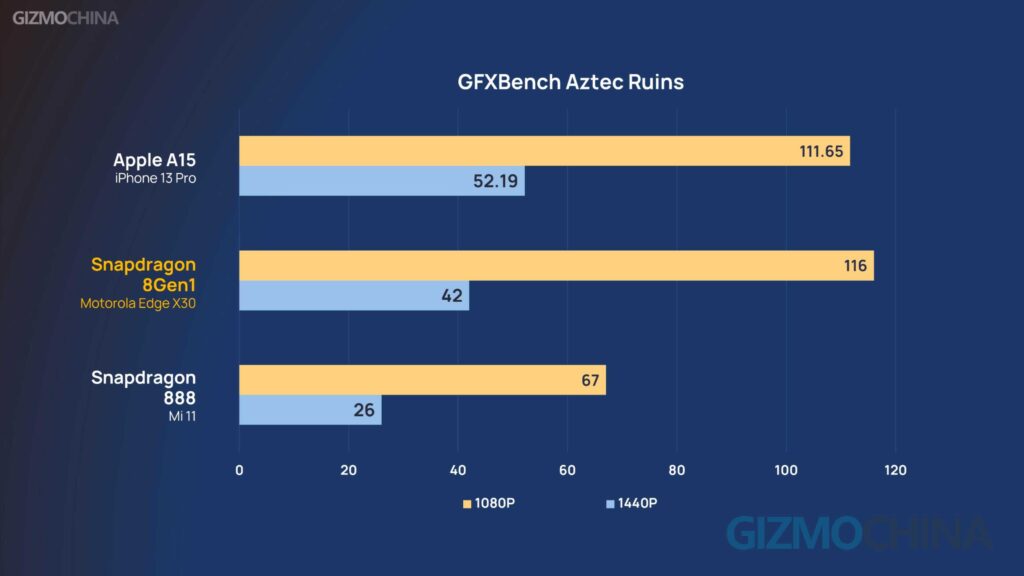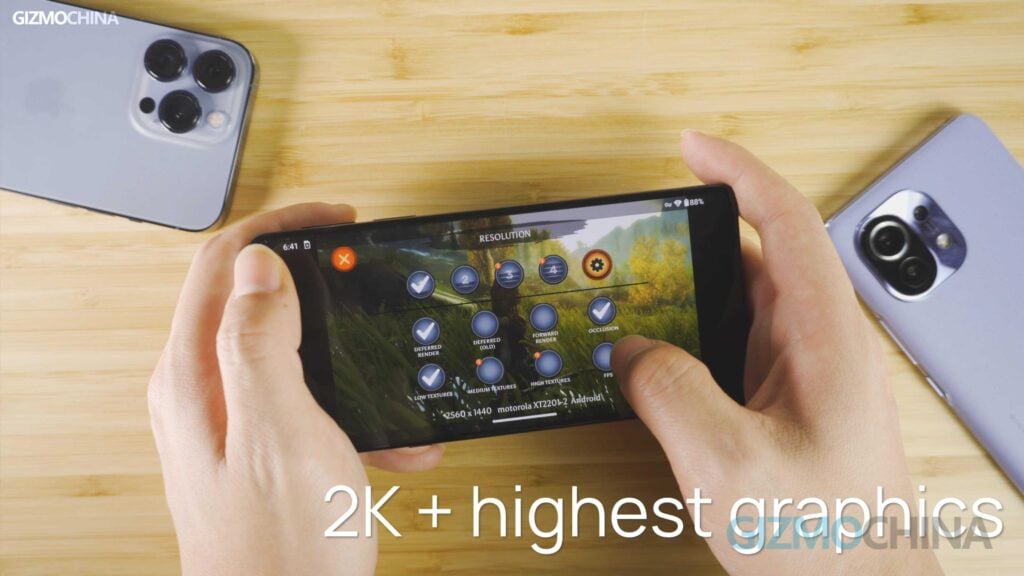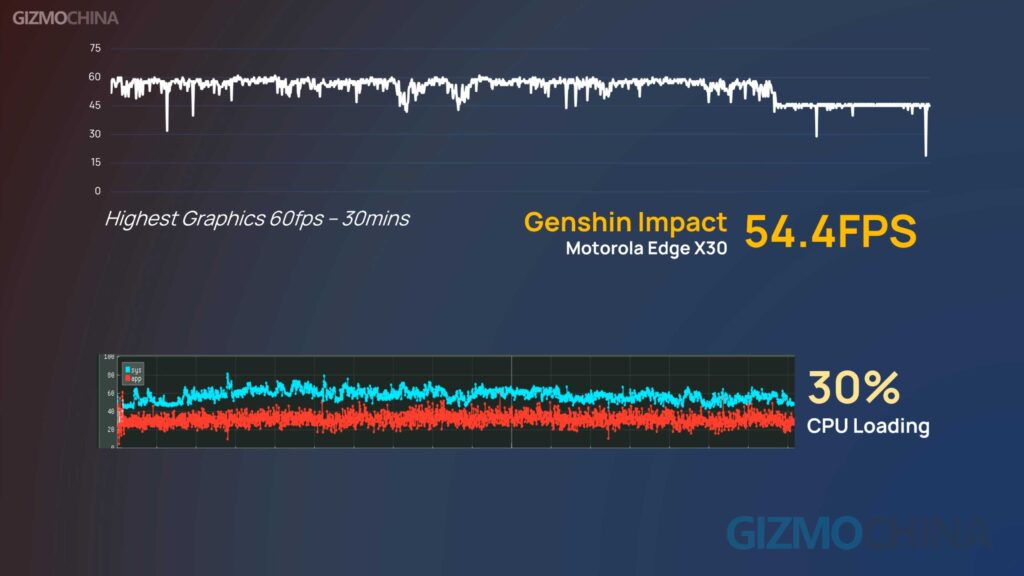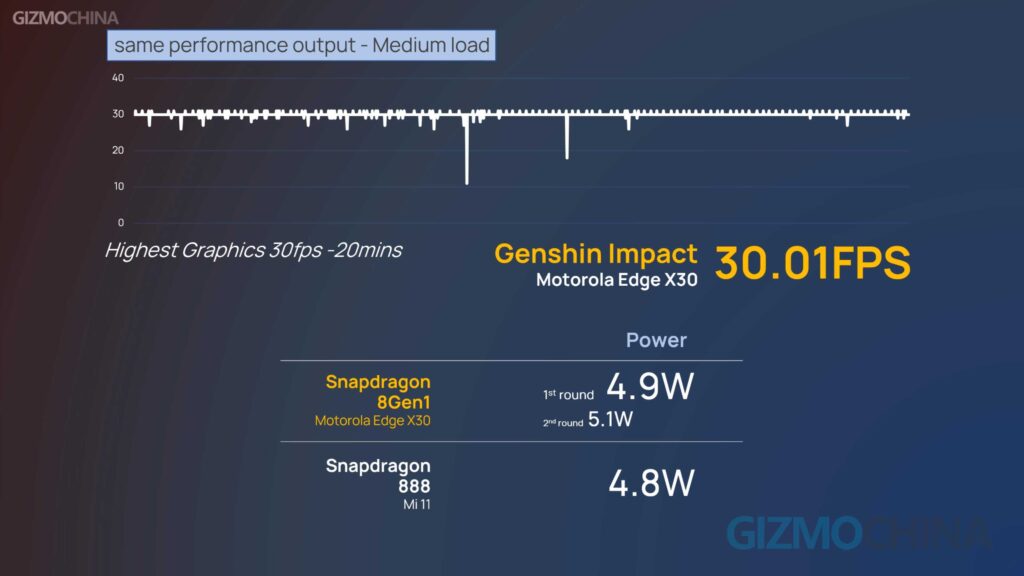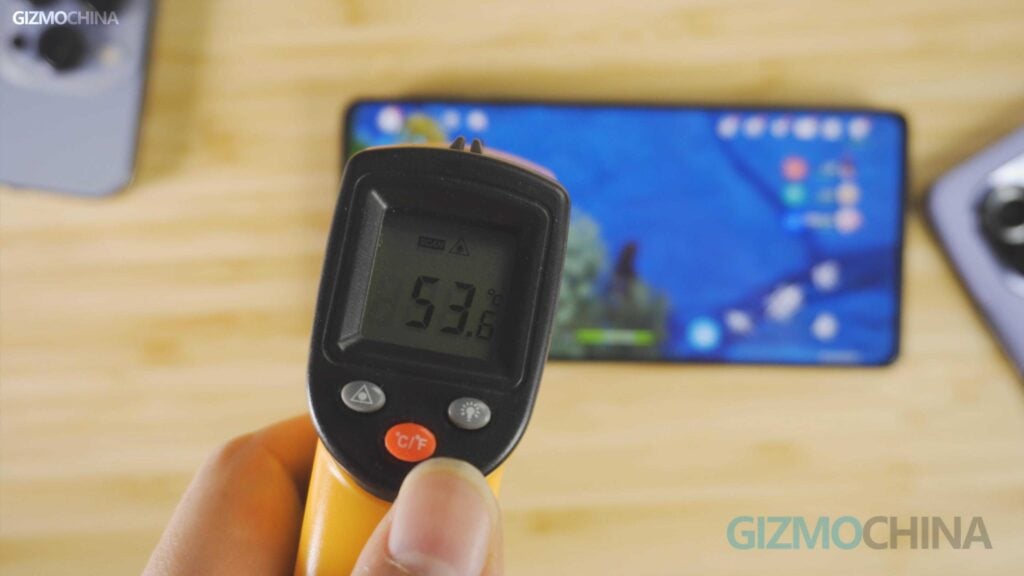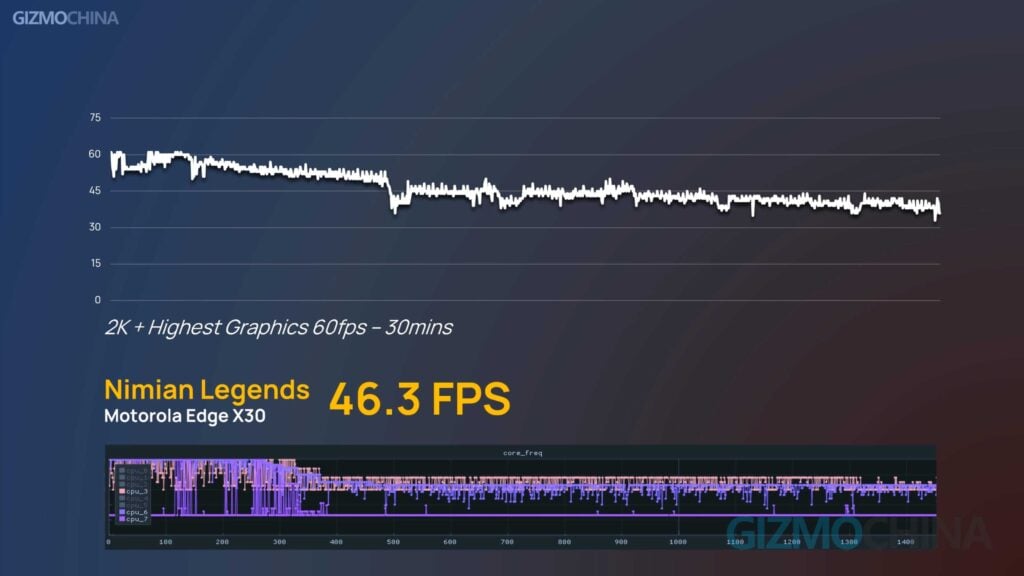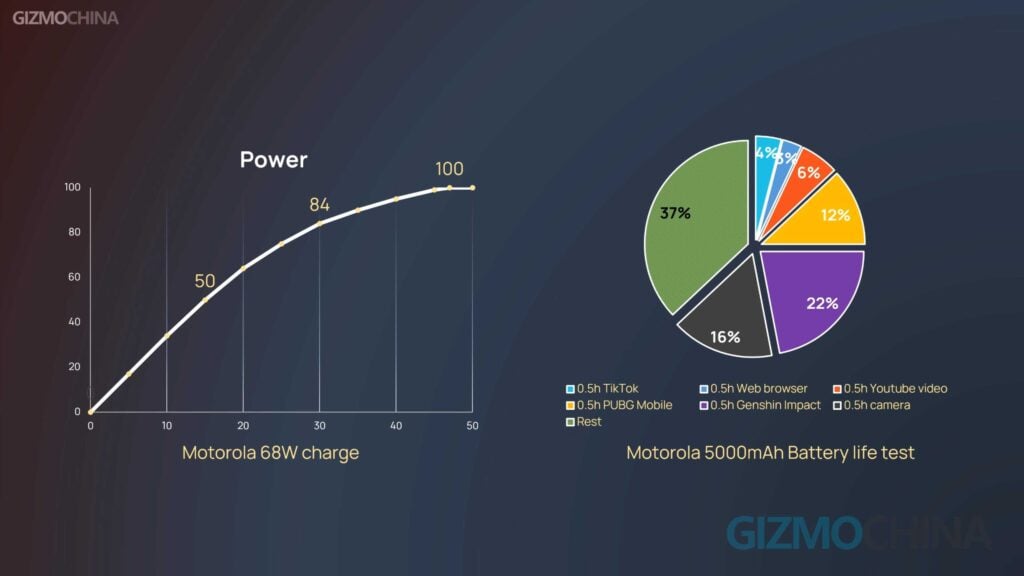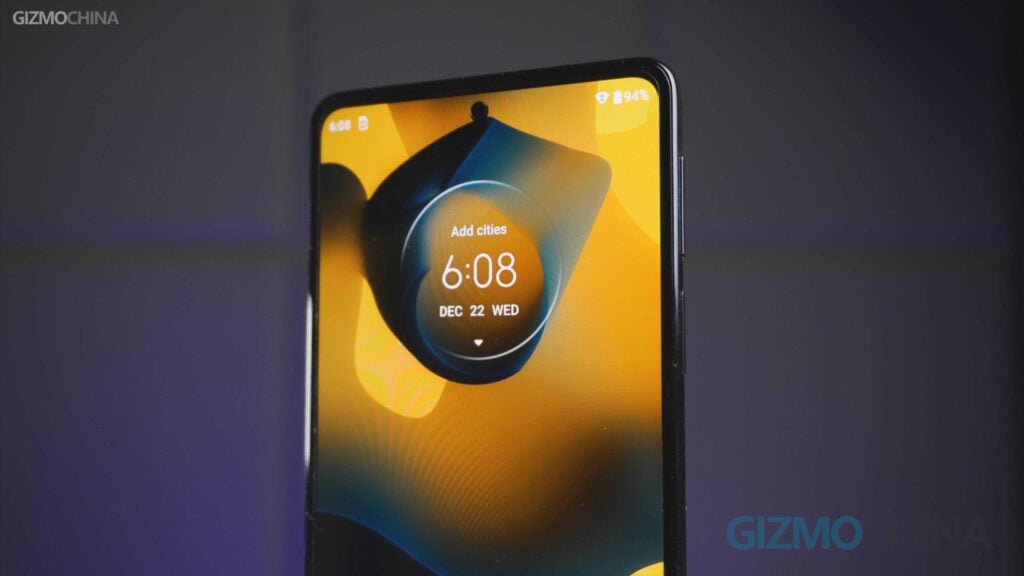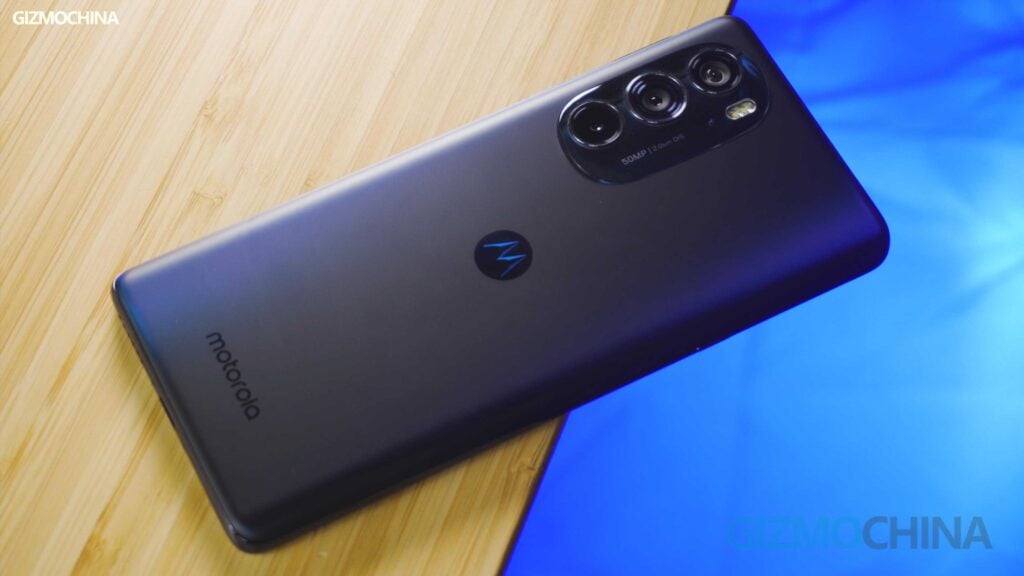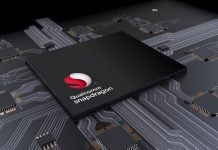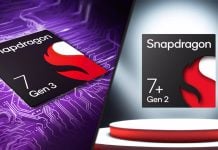We’ve talked a lot about the Snapdragon 8 Gen1 chipset in our preview video right after launch. Now the chip has finally come to our office inside the Motorola Edge X30, so let’s find out whether the new chip can rebuild the reputation of the Snapdragon flagship series.
We’ll try to test the chip by putting it through a number of benchmark tests, starting with Geekbench 5.
VIDEO
Snapdragon 8 Gen1 – Geekbench 5
After checking the results of the Geekbench 5 CPU test, you would find that there’s almost no performance improvement compared to the 888 chipset.
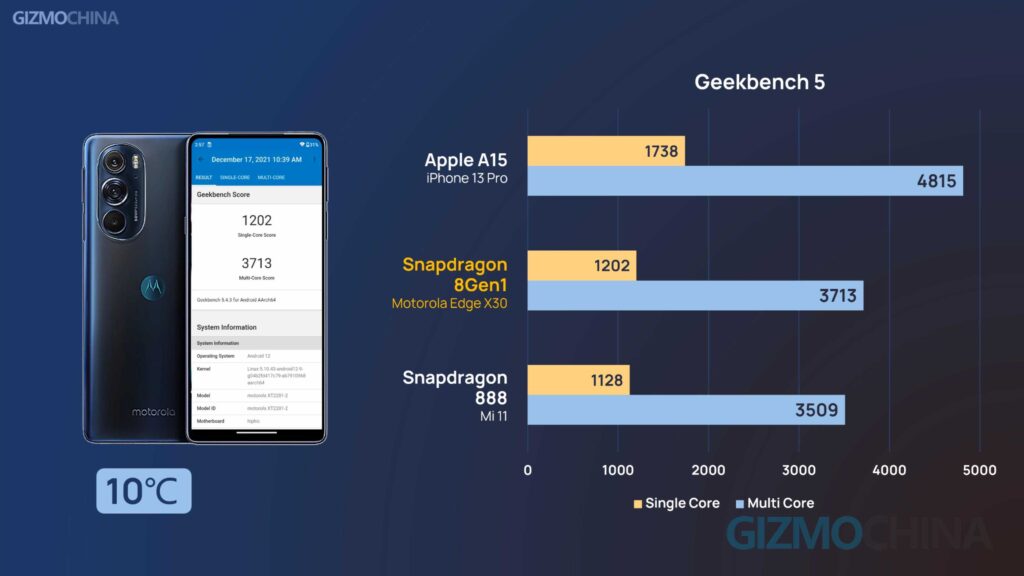 We got a score of 1200 for the single-core test, and 3700 for the multi-core test at a temperature of 10℃. While at 20℃, the multi-core result came down to 3500. It seems that the CPU performance might easily be influenced by the temperature.
We got a score of 1200 for the single-core test, and 3700 for the multi-core test at a temperature of 10℃. While at 20℃, the multi-core result came down to 3500. It seems that the CPU performance might easily be influenced by the temperature.
But at the same time, note that the Geekbench 5 may not have got an update to adapt to the new chipset, and considering the software developed by Motorola is still an early version, the result might be not able to accurately reflect the improvement of 8 Gen1’s performance.
Snapdragon 8 Gen1 – AnTuTu benchmark
Then we tested it again on Antutu Benchmark. The overall score doesn’t exceed 1 million as we saw in leaked screenshots but remains at around 980000. And there’s a little gap between these two chips’ CPU results. And surprisingly, the old 888 chip sometimes could achieve a better multi-core performance in the benchmark. Also, we learned that the result could be better if you find a way to get a lower testing temperature, like putting it in the fridge…. Alright it sounds a bit funny.
Geekbench 5 power output
If there is no significant improvement over the CPU performance, how about its power consumption running the benchmark? We all know that the 888 chip doesn’t have good power efficiency on most Android flagship models, and the new 8Gen1 chip was even likely to be worse. At least for now, the power output when running the Geekbench 5 is even higher than what we got on the snapdragon 888 platform. On an average, it went up to 10.5W for multi-core test and 4.0W for single-core test.
No wonder we felt that the battery was dropping quickly during all our tests.
Snapdragon 8 Gen1 – GPU: 3DMark
The first surprise from this chipset came in the 3DMark GPU test.
We ran it at various temperatures and then tried to figure out how much of an impact was caused by the temperature factor. At 5℃ room temperature, the Edge X30 can run up to 9900 in the first round of the test, which has exceeded the average score of the latest Apple’s A15 chipset running in the iPhone 13 Pro, which is almost 70% better than most phones powered by the 888 chipset.
And then we brought it to 15℃ room temperature. The result was down to 9700. At 25℃, we ran 3 more rounds and the scores went down to 8900. It seems that the 8 Gen 1 is pretty sensitive to temperature. And in daily use, the peak performance probably will be hard to sustain for a long time gaming or the chip might throttle down due to the heating issue. However, we’re still pretty surprised by its GPU improvement from the 888 chipset. Even when we met the heating issue, the 3DMark result still got 50% increase.
Snapdragon 8 Gen1 – GFXBench
And let’s do another GPU test in GfxBench. The result also proved the significant improvement of the new chip’s GPU. No matter for OpenGL or Vulkan test, the 8Gen1 has performed close to what we tested on iPhone 13 Pro and ran with 60% improvement from the Snapdragon 888 of the Mi 11.
Snapdragon 8 Gen1 Gaming Performance Review
Genshin Impact – Framerate, power, heating
Now let’s test its gaming performance. It’s too easy for this chip to run games like PUBG Mobile. And there’s no perceivable heating being detected.
But what about heavy games? We ran Genshin Impact under the highest graphics at 20℃. The result is not bad, and the gaming experience got slightly improved with a pretty high framerate in the first 15 mins.
But since the game hasn’t unlocked the 60fps limit, CPU loading only remained at around 30%, and we were probably not able to access the peak performance of the chipset. However, we still encountered the similar throttling issue found on all the 888-chipset phones. Due to high temperature and high-power consumption, the X3 large core slowed down, and the frame rate fluctuated, eventually stabling down at 54.4fps on an average.
Further, we ran the game again to reveal its power-performance efficiency compared to the Mi 11 running the 888 chipset. We switched the framerate lock down to 30fps on both models and tried to simulate an average loading for most android games. Under such a situation, the power efficiency of the 8Gen 1’s result of 4.9 W didn’t get much better than the 888 chipset. So it looks like gamers may still need to bear the high-power consumption.
And the surface of the phone also got heated up quickly when running these heavy games. During the 30-min gaming test, the maximum surface temperature went up to around 53℃. So its power and heating performance may still be an issue for gaming, just like the 888 chipset.
Gaming stress test: Nimian legends – Framerate, power, heating
In another game, Nimian Legends, to give it the hardest performance test, we upgraded the gaming resolution to a 2K level with the highest graphics. In the first 5 minutes, the Edge X30 powered by 8 Gen1 did deliver the excellent peak performance as we got in GPU Benchmarks, but it didn’t last long and got throttled down for the rest of the time thanks to the heating issue (46.28fps).
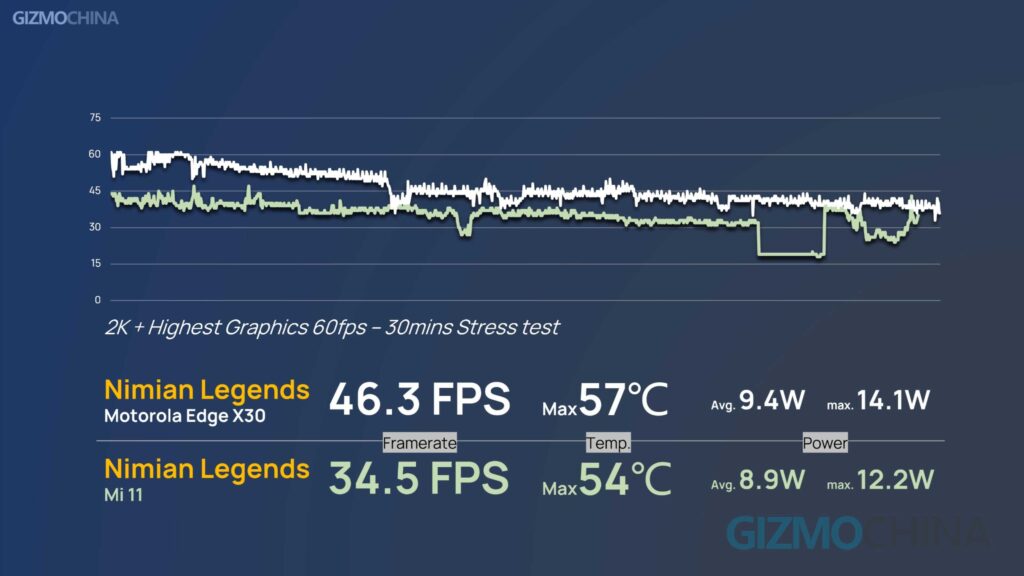 The highest temperature hit at 57℃ and the detected chip temperature went up to around 90℃, which is really insane. And the peak power even reached 14.1W, which is also the highest figure that we’ve tested over a phone’s power output. Eventually, the 30-min test consumed around 30% of power.
The highest temperature hit at 57℃ and the detected chip temperature went up to around 90℃, which is really insane. And the peak power even reached 14.1W, which is also the highest figure that we’ve tested over a phone’s power output. Eventually, the 30-min test consumed around 30% of power.
But at the same time, one positive thing to note here is that the throttled performance is still at the level that’s close to the Mi 11’s peak performance.
3DMARK stress test: Gaming, throttled performance, heating, stability
To prove this finding, we also performed a comparison of the 3DMark 4K wildlife stress test. We found that Mi 11 is better at maintaining a stable but lower framerate throughout the 20 loops, which protected the phone from getting over-heated, avoiding fast battery drain. While on the Edge X30, it started with an excellent result, but the performance throttled down with each round.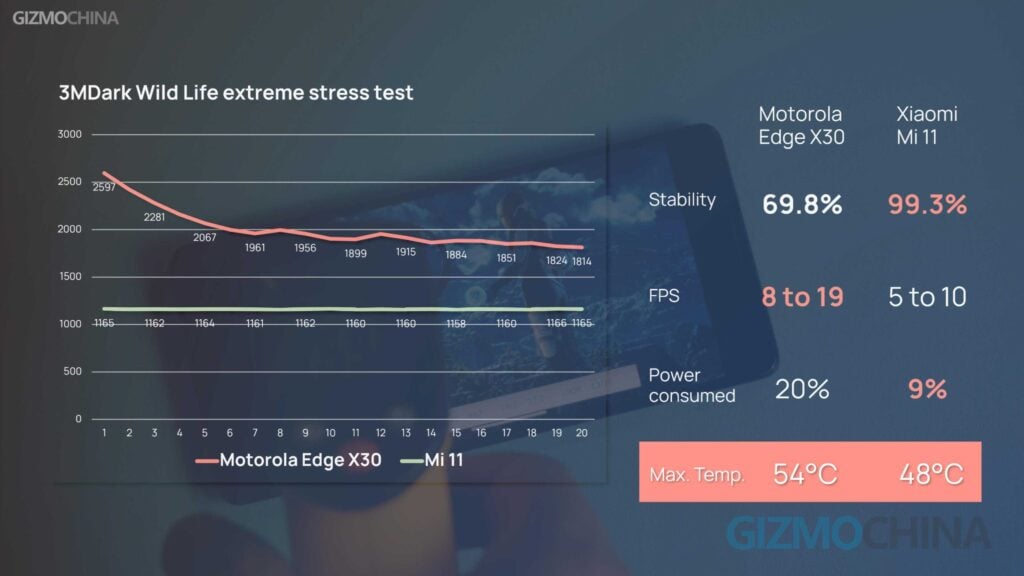 However, just like we found in our gaming test, the new Snapdragon chip’s lowest score in the last loop is still much better than the Mi 11’s result of the first loop. Also, the X30’s surface was extremely hot at around 54℃, and it consumed nearly twice as much power as the Mi 11.
However, just like we found in our gaming test, the new Snapdragon chip’s lowest score in the last loop is still much better than the Mi 11’s result of the first loop. Also, the X30’s surface was extremely hot at around 54℃, and it consumed nearly twice as much power as the Mi 11.
Moto Edge X30 Charging & battery
The Edge X30 features a 4500mAh battery and 68W fast charge. For its battery life, the phone didn’t perform well with the chipset. Here are the results of our battery test and charging test.
Snapdragon 8 Gen1 Performance: Verdict
After all the tests we performed, we hope you’ve got an idea of how exactly the 8Gen 1 chip performs.
But at the same time, I also want to tell you another important fact about these two chipsets: After months of optimizations, most flagships powered by the snapdragon 888 chip have used a conservative CPU strategy. On the other hand, being a very early model featuring the Snapdragon 8 Gen1, to avoid over-heating and to seek a balance with battery life, the Edge X30 has still got a lot of work to do with its software optimization.
We do have to add that it achieved better peak performance due to the much better GPU. If you could effectively cool it down, the excellent performance can likely last for much longer.
To conclude, the good message here is that the new snapdragon 8 chip brings an astounding GPU performance upgrade, which even catches up with Apple’s latest A15 chip. As for actual gaming, the 6MB L3 cache also provides better support to access a smoother experience in heavy games like Genshin Impact. But the bad news is that the improvement of CPU is not significant at all. And power consumption and heating are still the main issues that brands are left to deal with, and they haven’t really improved when compared to the 888 chip.
So that’s it for today. We hope our performance review has given you a good overview of what to expect from the new Snapdragon chipset.
RELATED:

